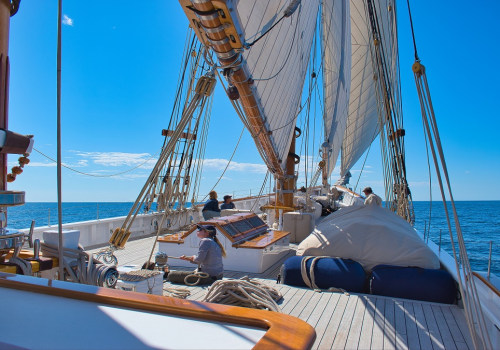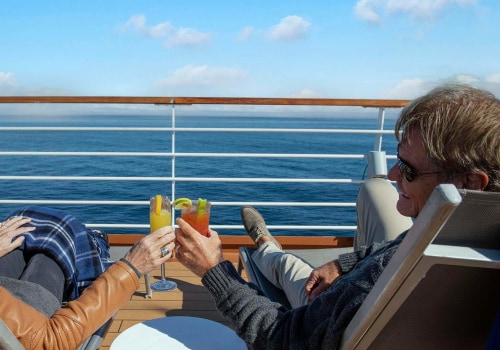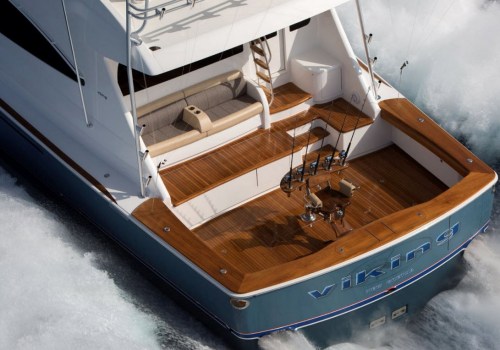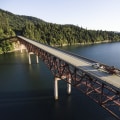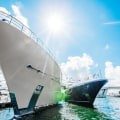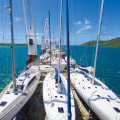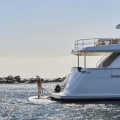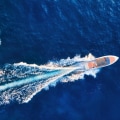Are you dreaming of sailing the open seas with the wind in your hair and the sun on your face? If so, catamaran sailing yachts may be the perfect vessel for you. These sleek and spacious boats offer a unique and exhilarating sailing experience that combines luxury and performance. In this article, we will dive into everything you need to know about catamaran sailing yachts. From their history and design to their features and benefits, we will cover it all. Whether you are a seasoned sailor or just starting to explore the world of yachting, this article will provide valuable insights and information. So, sit back, relax, and let us guide you through the world of catamaran sailing yachts.
By the end of this article, you will be well-informed and ready to set sail on your next adventure. A catamaran sailing yacht is a multihull vessel with two parallel hulls of equal size. It has a unique design that sets it apart from traditional monohull yachts, making it a popular choice for sailing enthusiasts. In this article, we will delve deeper into the history and evolution of catamaran sailing yachts, their features and advantages, as well as tips for sailing and maintaining them. The history of catamarans can be traced back to ancient Polynesian cultures where they were used for fishing and transportation.
However, it wasn't until the 1960s that catamarans became popular in the recreational boating industry. With advancements in technology and materials, catamarans evolved to become faster, more stable, and spacious vessels. Catamarans have a unique design with two parallel hulls connected by a deck or platform. This design allows for a wider beam, which provides more stability and space compared to monohull yachts.
The wider beam also allows for a shallower draft, making it easier to navigate in shallow waters. One of the main advantages of choosing a catamaran over a monohull yacht is the spacious layout. Catamarans have two hulls instead of one, which means more space for living areas, cabins, and storage. This makes them an ideal choice for families or large groups who want to enjoy a comfortable and luxurious sailing experience.
Catamarans are also known for their impressive performance on the water. With their wider beam and dual hulls, they have less resistance and can reach higher speeds compared to monohull yachts. This makes them a favorite among competitive sailors and those looking for an exhilarating sailing experience. However, there are also some disadvantages to choosing a catamaran.
They can be more expensive to purchase and maintain compared to monohull yachts. Additionally, they require more skill to sail and maneuver, especially in rough seas. Proper training and experience are crucial for safely operating a catamaran. When it comes to sailing and maneuvering a catamaran, there are some important tips to keep in mind.
Due to their wide beam, catamarans can be more sensitive to weight distribution, so it's important to evenly distribute weight throughout the vessel. It's also essential to pay attention to the wind direction and use the sails accordingly to avoid capsizing. There are many popular destinations for catamaran sailing trips around the world. From the Caribbean to the Mediterranean, catamarans offer an unforgettable way to explore these beautiful locations.
Some popular activities include snorkeling, diving, and island hopping. Maintenance and upkeep for catamarans is also an important consideration for yacht buyers. Regular cleaning, maintenance checks, and repairs are necessary to ensure the vessel is in good condition. It's also important to have a budget for ongoing maintenance costs.
The cost of owning a catamaran can vary greatly depending on factors such as size, age, and features. However, they typically have a higher resale value compared to monohull yachts due to their popularity and demand. It's important to carefully consider all costs and do thorough research before making a purchase decision. In conclusion, catamaran sailing yachts offer a unique and luxurious sailing experience with their spacious layout and impressive performance.
They have a rich history and continue to evolve as technology advances. While there are some drawbacks to consider, the benefits of owning a catamaran make it a top choice for yacht buyers around the world.
Popular Destinations for Catamaran Sailing Trips
One of the best ways to experience the thrill of catamaran sailing is by embarking on a sailing trip. From tropical destinations to adventurous routes, there are many options for catamaran sailing trips around the world. For those seeking a tropical paradise, the Caribbean is a top destination for catamaran sailing. With crystal clear waters, white sandy beaches, and warm weather year-round, it's no wonder why many choose to sail their catamarans in this region. If you're looking for a more adventurous trip, consider sailing through the Mediterranean.With its rich history, stunning landscapes, and diverse cultures, there's never a dull moment when navigating the waters on a catamaran. The South Pacific is another popular destination for catamaran sailing trips. From Tahiti to Fiji, these islands offer breathtaking scenery and ideal sailing conditions. Plus, you'll have the chance to visit remote islands and experience the local way of life. No matter where you choose to sail, a catamaran sailing trip is sure to be an unforgettable experience. So why not consider one of these popular destinations for your next adventure?
The Unique Design and Features of Catamaran Sailing Yachts
Catamarans have a distinct design that sets them apart from other types of yachts.Their unique twin-hull structure provides stability and increased space compared to traditional monohull yachts. This design also allows for a shallower draft, making it easier to navigate in shallow waters and access remote anchorages. One of the most notable features of catamaran sailing yachts is their spacious layout. With two hulls, there is more room for multiple cabins, a larger galley, and a comfortable living area. This makes catamarans a top choice for families or groups looking for a comfortable and luxurious sailing experience. Another advantage of the catamaran design is its impressive maneuverability.
The twin-hull structure allows for better handling and responsiveness, making it easier to navigate through tight spaces and perform sharp turns. This feature is particularly appealing for those who enjoy adventurous sailing or participating in regattas. In addition to their unique design, catamaran sailing yachts also come with a range of features that enhance the overall sailing experience. Many catamarans are equipped with spacious cockpits, offering plenty of room for outdoor dining and lounging. Some models also have a flybridge or upper deck, providing a panoramic view of the surrounding scenery. Onboard comfort is also a key feature of catamaran sailing yachts.
Many models have air-conditioning, modern appliances, and ample storage space for longer voyages. Some catamarans even have additional features such as watermakers and solar panels, making them more self-sufficient and eco-friendly. Overall, the unique design and features of catamaran sailing yachts make them an attractive option for those looking to buy a yacht. From their stability and spacious layout to their impressive maneuverability and onboard amenities, catamarans offer a one-of-a-kind sailing experience that is hard to beat.
The Advantages and Disadvantages of Choosing a Catamaran
While catamarans offer many benefits, they also have some drawbacks that should be considered. Here are some pros and cons of choosing a catamaran as your sailing yacht. One of the main advantages of a catamaran is its spacious layout.With two hulls, catamarans offer more room for living and entertaining compared to traditional monohull yachts. This makes them a great choice for those who plan on spending extended periods of time on their yacht or for those who enjoy hosting guests. Another advantage of catamarans is their impressive maneuverability. The dual hull design allows for better stability and handling, making it easier to navigate through rough waters and tight spaces.
Catamarans
are also known for their shallow draft, meaning they can access shallow waters that are not accessible to monohull yachts. This opens up more options for exploring and anchoring in unique locations. However, like any yacht, there are also some disadvantages to choosing a catamaran.One of the main concerns is the cost. Catamarans tend to be more expensive than monohull yachts due to their larger size and added features.
Catamarans
also require more maintenance, as there are two hulls to maintain instead of one. This can increase maintenance costs and time spent on upkeep. Another potential drawback is the limited availability of marinas and docking options for catamarans. Due to their wide beam, they may not be able to fit in certain marinas or slips, limiting your options for docking. Overall, when considering a yacht purchase, it is important to weigh the advantages and disadvantages of each type.While catamarans offer many benefits, they may not be the right choice for everyone. Consider your needs and preferences before making a decision.
The Cost of Owning a Catamaran and Potential Resale Value
Buying a catamaran is a significant investment, so it's essential to understand the costs involved. Catamarans are known for their spacious layout and impressive maneuverability, making them a top choice for many yacht buyers. However, with all the benefits that come with owning a catamaran, there are also expenses that need to be considered. The first cost to consider is the initial purchase price of the catamaran itself.This can vary greatly depending on the size, model, and features of the yacht. On average, catamarans tend to be more expensive than traditional monohull sailing yachts due to their larger size and added amenities. Aside from the purchase price, there are also ongoing expenses to keep in mind. These include maintenance and repairs, insurance, docking fees, and crew salaries if you choose to have a crew on board. These costs can add up quickly and should be factored into your budget when considering buying a catamaran. However, it's important to note that catamarans typically have lower operating costs compared to monohull yachts.
This is because they have two hulls instead of one, which allows for better stability and less drag in the water. This can result in lower fuel consumption and maintenance costs. When it comes to resale value, catamarans hold their value well in the market. Due to their popularity and demand, they often have a higher resale value compared to monohull yachts. This is especially true for well-maintained and upgraded catamarans. In conclusion, owning a catamaran comes with its own set of costs, but with careful consideration and budgeting, it can be a worthwhile investment.
With their impressive performance and resale value, catamaran sailing yachts are a top choice for those looking to buy a yacht.
How to Properly Sail and Maneuver a Catamaran
Sailing a catamaran requires a different technique than sailing a monohull yacht. While both types of yachts have their own unique characteristics, catamarans have a wider beam and two hulls, which require a different approach when it comes to sailing and maneuvering. One of the main differences between sailing a catamaran and a monohull yacht is the use of the sails. Catamarans rely heavily on their sails for propulsion, while monohulls can also use their keel to generate lift and stability. This means that catamarans must be sailed at a slightly different angle to the wind in order to achieve maximum efficiency. When it comes to maneuvering a catamaran, one of the key factors to keep in mind is its size and weight distribution.Due to their wider beam, catamarans may be more difficult to handle in tight spaces or in narrow channels. It is important to have a good understanding of your vessel's dimensions and how it will respond to different wind and water conditions. Another important aspect of catamaran sailing is understanding how to use the rudders. Unlike monohull yachts, which typically have one rudder, catamarans have two separate rudders, one on each hull. This allows for better control and maneuverability, but it also requires some adjustment in technique. To properly sail and maneuver a catamaran, it is essential to have a good understanding of the basic sailing principles and techniques.
It is also important to practice and get comfortable with your vessel's specific characteristics and capabilities. Here are some tips for properly sailing and maneuvering a catamaran:
- Understand your vessel's sail plan: Catamarans have a different sail plan than monohull yachts, with a larger mainsail and a smaller headsail. Make sure you know how to adjust and trim your sails for different wind conditions.
- Use your rudders effectively: As mentioned earlier, catamarans have two separate rudders, so it is important to use them correctly. In general, the rudder on the leeward hull (the side of the boat closest to the wind) should be used for steering, while the other rudder can be used for fine-tuning.
- Be aware of your surroundings: Due to their size and weight distribution, catamarans may take longer to respond to steering and may have a wider turning radius. Be mindful of this when maneuvering in tight spaces or around other vessels.
- Practice docking and mooring: Docking and mooring a catamaran may require different techniques compared to monohull yachts.
It is important to practice and get comfortable with these maneuvers before attempting them in more challenging conditions.
Maintenance and Upkeep Tips for Catamarans
Like any other vessel, catamarans require regular maintenance to keep them in top condition. In this section, we will cover some essential maintenance tasks and offer tips for keeping your catamaran in great shape.Maintenance Tasks:
1.Regular Cleaning - It is important to regularly clean your catamaran to prevent any build-up of dirt or grime. This includes scrubbing the decks, hulls, and sails, as well as cleaning the interior of the boat.2.Inspecting for Damage - Before and after each sail, it is important to thoroughly inspect your catamaran for any signs of damage. This can include cracks, tears, or any other issues that may need to be addressed. 3.Checking for Leaks - Catamarans have multiple hulls, so it is important to regularly check for any leaks in the hulls or the connections between the hulls and the deck. Any leaks should be repaired immediately to prevent further damage.
Maintenance Tips: 1.Use Quality Products - When cleaning or maintaining your catamaran, it is important to use high-quality products that are specifically designed for marine use. These will be more effective and less likely to damage your boat. 2.Follow Manufacturer's Instructions - Always follow the manufacturer's instructions for maintenance and upkeep tasks. This will ensure that you are using the correct methods and products for your specific catamaran model.
3.Have a Maintenance Schedule - Creating a regular maintenance schedule can help you stay on top of tasks and ensure that your catamaran is always in top condition. By following these maintenance tasks and tips, you can keep your catamaran in great shape and enjoy many smooth sailing adventures. In conclusion, catamaran sailing yachts offer a unique and exciting sailing experience for yacht enthusiasts. Their spacious design, impressive performance, and various features make them a top choice among sailors. By considering the points covered in this article, you can make an informed decision about whether a catamaran is the right choice for you.
